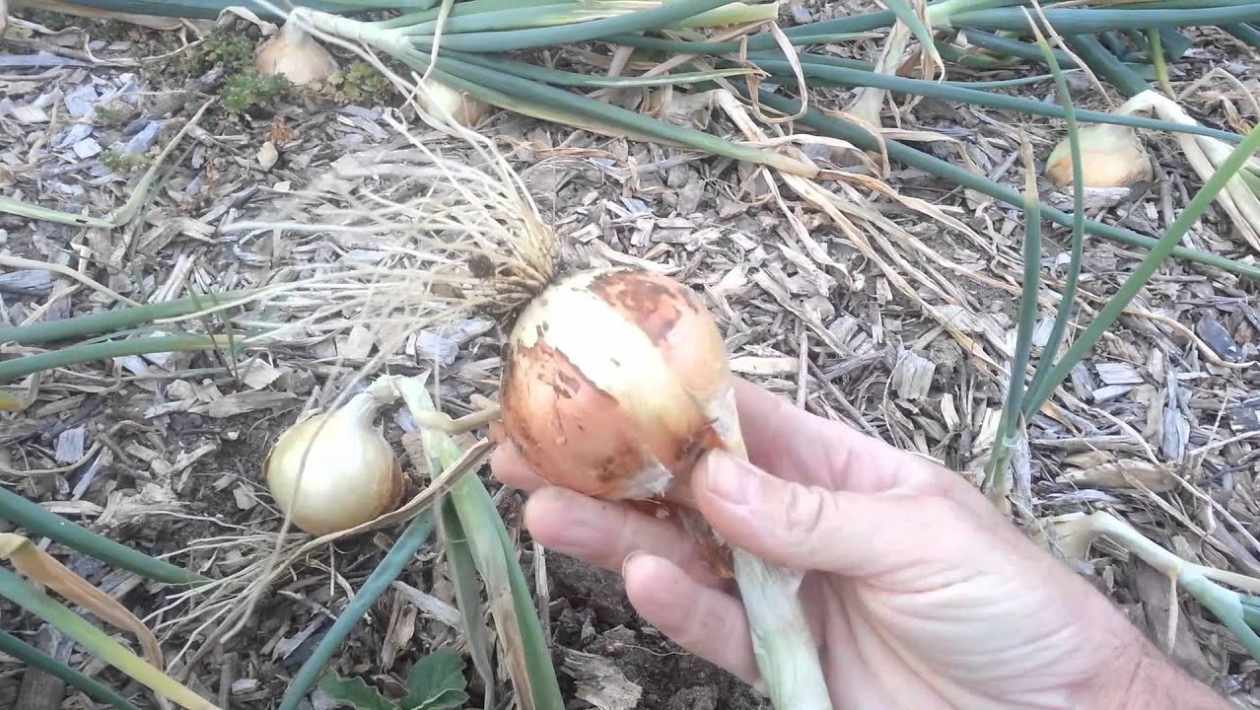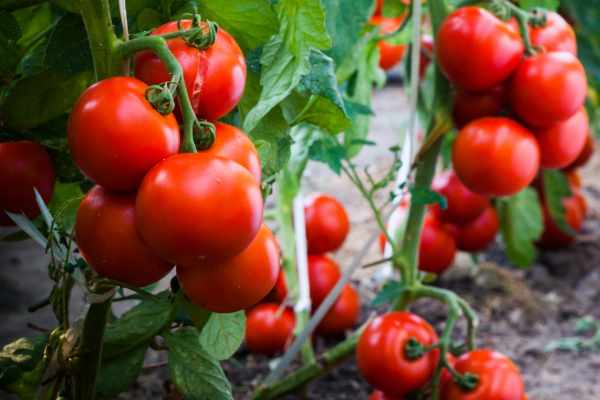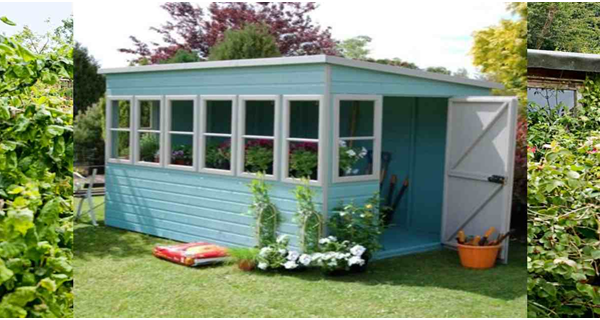The onion is one of the most popular vegetables in the garden. On the other hand, gardeners – and especially novices – may have difficulty knowing when to harvest onions. Here are some tips.
There are three stages for three uses:
First, you can harvest onions almost any season if you want.
If you harvest them very young before a proper bulb formed (we speak of a “green harvest”), you will have what call green onions. Or these are bunching onions and the bole and foliage eaten.
You can also harvest onions when the bulb is well-formed but small in size (June, July, early August). Then they call it fresh onions. Sometimes if they are small but round, they are baby onions. But the real baby onion is another species. So, let’s know more when to harvest onions.
When to harvest onions?
Know that if the onions harvest at this stage are perfectly edible, and besides their foliage too, they will not keep. Then they harvest it for relatively immediate use (they can store in the refrigerator for a week or two) or marinate.
The third harvest stage is the most classic: when the bulb is fully ripe. It is the storage onion, which can be kept dry for a very long time, sometimes all winter.
Depending on the variety and climate, the bulb can mature as early as June (a short-day variety grown in a temperate climate region). The classic onion, grown in a more temperate region, is long days and not will begin to form a bulb only after the summer solstice in June. Thus, it will mature around mid-August or early September.
What’s handy is that the plant then tells you when it’s ready to harvest. The foliage begins to sprawl on the ground and turns yellow, indicating a fully ripe onion. When the bulbs in a row don’t all ripen at the same time, some impatient gardeners bend the leaves of recalcitrant plants, laying them down with their feet, to encourage them to follow their already ripe mates. Still, you can also wait until all are at the stage when the foliage naturally sags.
Soaking
These full-sized bulbs can be eaten fresh, but if you want to keep them for a long time, they need to be dried, a step called drying.
To do this, pull out the bulbs (often, a garden fork is used, as with a shovel, there is more risk of accidentally slicing bulbs) on a dry day when you expect no rain for a few days. Stir the bulbs to get as much soil as possible (but without rinsing, you don’t want humidity at this stage!) And lay the bulbs and foliage on the ground, preferably in the sun, for two or three days.
Avoid injuring the bulbs during harvest. Otherwise, there will a risk of rotting afterward. Use any accidentally damaged bulb in the kitchen without delay.
In the event of a long rainy period at the time of harvest, it may be necessary to dry the bulbs in a shed or garage shelter.
After soaking
After two or three days, wash the bulbs roughly with your hands or a soft brush, never with water. If this cleaning tears off the papery envelope a little, it does not matter: the bulb will produce another. However, remove any rotten or malformed bulbs. Sometimes the foliage will come off on its own at this stage. Otherwise, you will pick it up again or cut it near the bulb 2 or 3 weeks later, when it is scorched. Also cut, at the same stage, the dried roots.
Store the bulbs in shelves (wooden crates), on a wire mesh, or in cardboard boxes with openings in a cool, dry, and well-ventilated place, preferably in the dark, perhaps in a basement or garage. Ideally, the bulbs will not touch each other, which will allow perfect ventilation, but you can also arrange them in layers. If so, it would be wise to check them monthly, removing any damaged bulbs.
Another possibility: after drying, you can braid the leaves if they have remained attached to the bulbs and hang the braids from the ceiling, always in a cool, dry, and well-ventilated room.
For very long storage (and you can store some varieties until April!), The location must be very cool (4 to 8 ° C), but protected from frost: a cold room, for example.
Have a good harvest Onions!
Thanks to their unique properties and flavors, onions have become a staple in the kitchen. There are different varieties like white, red, yellow onion, etc. Easy to grow, onion is one of the oldest condiments cultivated in France. Indispensable in the vegetable garden, its cultivation often accompanies that of garlic and shallot. It is possible to sow your onions, but generally, the seedling is more widespread. Find out how to plant, grow and harvest onions from the vegetable garden!
When to plant white onions?
Native to Western Asia, the white onion, Allium cepa, is one of the oldest vegetables cultivated by humans. It began to be picked in its wild form very early in prehistoric times before the Egyptians decided to cultivate it to feed the slaves who built their works.
Since then, the white onion has established itself as a trendy vegetable, becoming the symbol of new vegetables’ return in the spring. It has earned it the fresh onion’s nickname because, unlike the onion for keeping, the white wine is eaten fresh in spring.
When to sow and harvest white onion?
White onions are sown (or planted) at three different times:
Sown in a greenhouse in August / September for a harvest at the end of winter,
Sown outdoors from February / March, for harvest in late spring / early summer
We planted in late March / early April for a summer harvest. For this last method, we plant bulbils, these small onions with a diameter of less than 2 cm, which grow faster than if we start from seeds.
The crunchy stems and mild flavor of white onion replace chives or scallions slow to restart after the cold winter. They are excellent as an accompaniment to good fresh goat cheese.
When to sow white onions at summer?
Late summer sowing
The end of summer seeding is interesting because you can harvest your onions very early in the season in March or even February. However, this method requires having a greenhouse on hand or gardening in a region with a milder winter. Otherwise, your young onion seedlings will find it hard to cope with winter outdoors.
It would be best if you carried out your sowing in rows spaced about twenty centimeters apart. Do not be fooled by the apparent humidity of the first few centimeters of soil: at the end of summer. The few rain spots may have slightly moistened the soil. Still, it will be necessary to water your growing area before sowing to provide a favorable environment for the crop—germination of small seeds. So start by watering, then sow your white onions.
Try to do a seedling that is not very dense because you will have to thin out after a few weeks anyway. At this time, you will keep an onion every 5/7 cm on the row.
If you want to nourish your soil before sowing, know that it is better to add ripe compost rather than fresh organic matter, especially if you incorporate it in the first few centimeters of the soil. Like all other Alliaceae, the fresh onion does not like the presence of these poorly decomposed materials in the soil.
Once your onions are out of the ground, you can even lay a mulch on the ground to protect it.
Late winter sowing
For the February / March sowing, you can follow the same method as the previous one, but without the greenhouse!
If I have any advice for you, it would be to wait until March to sow. Fresh onions germinate between 10 and 30 degrees; thus, the month of March is more suitable for this sowing. Your onions will come out of the ground faster and will develop better! Finally, do not neglect to weed: the faster you intervene, the less work you will have afterward!
When to harvest onions at spring
Planting white onion bulbs
The bulbils so are small bulbs of onions produced the year before planting and that you plant in early spring. They grow faster because they are already a few months old and have reserves, much more than just seeds!
Thus, we generally wait until the end of March to the beginning of April to plant them. In this way, the climate has become much milder. And the white onions proliferate. So much so that they can start to harvest at the end of June. The planting done in the same conditions as sowing: a bulbil every 5 cm in a row, a few centimeters deep, spacing the rows of 20-25 cm.
Do not hesitate to water after planting, especially if the weather is dry, to ensure a good recovery.
Thanks to these different sowing or planting methods, it is possible to harvest white onions or fresh onions for almost eight months of the year, which is good news for their unconditional fans!
FAQ of when to harvest onions
-
Where and when to plant onions?
Planting rather than sowing your onions will save you a good month on its growth. Onions usually plant in March or April. It is possible to grow it in all regions of France, even the most mountainous. To put the odds on your side, plant your onions in the waning moon. The onion fears clay soils, favor light and well-drained soil. The onion likes loose soil and can therefore be planted right after potatoes. Respect the crop rotation.
-
How to plant the onion?
It is not acceptable to amend the soil, but it is possible to prepare it by aerating it and loosening it with a hook. The bulbils of onions should be spaced 10 to 15 cm apart. As for the lines, they should space 20 cm apart. Plant the onion by hand, 3 cm deep, and always the tip-up. It comes from the surface of the earth. This method makes it possible to obtain onions faster and in greater volume than the seedlings, but they will not keep for a long time. Onions enjoy the company of garlic, beetroot, turnip, or radish, but not at all that of beans, potatoes, or eggplant. Do not hesitate to consult the fact sheet on vegetable garden placement.
- How to maintenance Onion
The onion does not like humidity. It will help if you keep watering to a minimum. Water lightly at the start of germination, then that’s it! Otherwise, the bulb may rot. It is also unnecessary to mulch. On the other hand, it’s essential to remove the weeds.
-
How to harvest onions?
White onions harvested in the spring from April and as needed. We harvest them as we go because they cannot be stored, so you must quickly consume them. The colored onions (yellow and red) harvest in summer, from July to September. Make dry your onions in the sun and keep them away from moisture in a relaxed and airy.
Conclusion of when to harvest onions
Suppose you need to arrive so early on the stalls and in the vegetable gardens. Its cultivation must anticipate from the end of summer. It is the key to succeeding in harvesting it from February.
It is also possible to sow the white onion at the end of winter, but it then matures quite late in spring or even in summer. Therefore, it is more interesting to mix the techniques to spread the harvests over a more extended period of the year.





